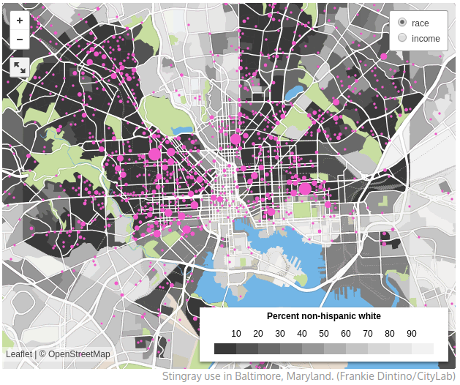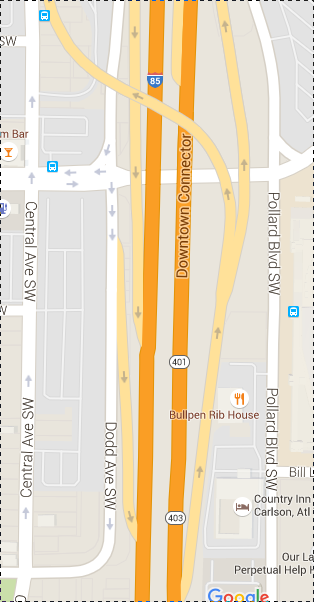Racial Disparities in Police ‘Stingray’ Surveillance, Mapped by George Joseph.
From the post:
Louise Goldsberry, a Florida nurse, was washing dishes when she looked outside her window and saw a man pointing a gun at her face. Goldsberry screamed, dropped to the floor, and crawled to her bedroom to get her revolver. A standoff ensued with the gunman—who turned out to be an agent with the U.S. Marshals’ fugitive division.
Goldsberry, who had no connection to a suspect that police were looking for, eventually surrendered and was later released. Police claimed that they raided her apartment because they had a “tip” about the apartment complex. But, according to Slate, the reason the “tip” was so broad was because the police had obtained only the approximate location of the suspect’s phone—using a “Stingray” phone tracker, a little-understood surveillance device that has quietly spread from the world of national security into that of domestic law enforcement.
Goldsberry’s story illustrates a potential harm of Stingrays not often considered: increased police contact for people who get caught in the wide dragnets of these interceptions. To get a sense of the scope of this surveillance, CityLab mapped police data from three major cities across the U.S., and found that this burden is not shared equally.
…
How not equally?
Baltimore, Maryland.
The map at Joseph’s post is interactive, along with maps for Tallahassee, Florida and Milwaukee, Minnesota.
I oppose government surveillance overall but am curious, is Stingray usage a concern of technology/privacy advocates or is there a broader base for opposing it?
Consider the following facts gathered by Bill Quigley:
Were you shocked at the disruption in Baltimore? What is more shocking is daily life in Baltimore, a city of 622,000 which is 63 percent African American. Here are ten numbers that tell some of the story.
One. Blacks in Baltimore are more than 5.6 times more likely to be arrested for possession of marijuana than whites even though marijuana use among the races is similar. In fact, Baltimore county has the fifth highest arrest rate for marijuana possessions in the USA.
Two. Over $5.7 million has been paid out by Baltimore since 2011 in over 100 police brutality lawsuits. Victims of severe police brutality were mostly people of color and included a pregnant woman, a 65 year old church deacon, children, and an 87 year old grandmother.
Three. White babies born in Baltimore have six more years of life expectancy than African American babies in the city.
Four. African Americans in Baltimore are eight times more likely to die from complications of HIV/AIDS than whites and twice as likely to die from diabetes related causes as whites.
Five. Unemployment is 8.4 percent city wide. Most estimates place the unemployment in the African American community at double that of the white community. The national rate of unemployment for whites is 4.7 percent, for blacks it is 10.1.
Six.African American babies in Baltimore are nine times more likely to die before age one than white infants in the city.
Seven. There is a twenty year difference in life expectancy between those who live in the most affluent neighborhood in Baltimore versus those who live six miles away in the most impoverished.
Eight. 148,000 people, or 23.8 percent of the people in Baltimore, live below the official poverty level.
Nine. 56.4 percent of Baltimore students graduate from high school. The national rate is about 80 percent.
(The “Shocking” Statistics of Racial Disparity in Baltimore)
Which of those facts would you change before tackling the problem of racially motivated use of Stingray technology?
I see several that I would rate much higher than the vagaries of Stingray surveillance.
You?


